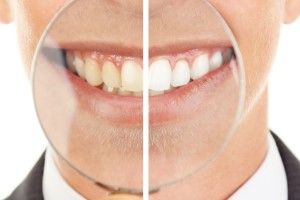What is Malocclusion and How is it Treated?

Malocclusion is the scientific term for misaligned teeth. This is something that we treat in our office on a regular basis. Many patients visit us because their malocclusion causes a less than ideal appearance or due to suffering from dental pain as a result of their misaligned teeth. We have a variety of orthodontic solutions we can implement to solve this problem and recommend scheduling a consultation to determine which one could be right for you.
What causes malocclusion?
The answer can be different for each patient. However, there are certain factors that make it more likely someone will suffer from misaligned or crooked teeth. These include:
- Sucking a thumb as a child past infancy
- A jaw that is too small
- Premature tooth loss
- Genetics
Regardless of what causes the misalignment, we have a solution to bring your teeth into alignment.
Health concerns
It is important to point out that in addition to impacting a person's appearance, there are health concerns that result from teeth being crooked. For example, it could be easier for food particles and plaque to become trapped in between teeth that are overlapping. Since it can be difficult to reach the spaces between the teeth with at-home cleaning, patients are more susceptible to developing tooth decay or a dental infection.
Regular trips to the dentist's office can help to prevent this but, ultimately, the best thing to do is to straighten the teeth so that these awkward spaces are eliminated. Gum disease is more prevalent among people who have severely crooked teeth since they are more difficult to keep clean. Since gum disease is the leading cause of adult tooth loss, it is critical to take the steps available to prevent gum disease or the spread of it.
Oral hygiene at home, regular trips to the dentist and straightening teeth are the best ways to prevent severe gum disease. Discomfort may also result from the jaw being out of alignment, as well. This can lead to soreness and even pain when speaking, biting down or eating. Aligning the jaw can assist a great deal and eliminating this discomfort.
Opportunities to treat malocclusion
We have many opportunities to treat this condition and will make a treatment recommendation based on the needs and preferences of each individual patient. In general, some of the tools at our disposal are:
1. Traditional braces
In this treatment, the dental professional secures a bracket to each individual tooth and threads a wire between them. Rubber bands hold the wires in place. On a regular basis, the professional will adjust or replace wires to ensure that teeth continue moving toward the correct position.
These braces can consist of metal or a tooth-colored ceramic. Metal braces are most popular for children because they are incredibly durable. Many adults prefer ceramic braces since they are discrete and blend in with the shade of the tooth.
2. Aligners
Clear aligners are a popular option when it comes to straightening teeth. They look like a full retainer, are made of clear plastic and surround the teeth completely. They are nearly invisible and the most discreet way for adults to straighten their teeth. They work well for moving teeth but are not necessarily the best option if someone has severe jaw abnormalities.
3. Oral surgery
Sometimes the teeth or the jaw do not respond sufficiently to traditional orthodontics. In this scenario, oral surgery may be recommended in addition to wearing braces or aligners. We can make the determination if this is necessary after completing an examination.
Schedule an appointment
To discover which options would work well for improving the appearance and structure of your smile, call 82nd St. Dental today at (718) 476-5555 and schedule an appointment. We look forward to assisting you.
Recent Posts
Dental bonding is one of the most versatile and minimally invasive restorative and cosmetic dental procedures. Dental bonding is the go-to procedure for many patients looking to fix imperfections or enhance their smile, from enhancing the appearance and shape of teeth to repairing damaged enamel. Whether you are new to cosmetic dentistry or considering touch-ups…
A dental bridge is a reliable, effective solution for tooth loss, as it offers functional and aesthetic benefits. This dental restoration helps improve chewing, speech, and overall oral health while maintaining the smile’s natural structure. Patients interested in bridges as tooth replacements can benefit from learning more about their basics, placement process, and long-term care…
A damaged or decayed tooth can affect your confidence and overall oral health. Fortunately, a same day crown can help restore your smile in a single dental visit. This efficient and innovative restoration allows you to improve your teeth without the lengthy process associated with traditional crowns.Same day crowns are custom-designed dental restorations prepared and…
All-on-4 dental implants can effectively restore a complete smile, offering a permanent and natural-looking alternative to traditional dentures. Many patients who have lost most or all of their teeth can qualify for this procedure, as it mainly requires good general and oral health. Learning about the basics of the All-on-4 procedure, its benefits, and eligibility…






